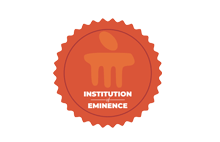A Nanopore Sequencing-based Pharmacogenomic Panel to Personalize Tuberculosis Drug Dosing
Document Type
Article
Publication Title
American Journal of Respiratory and Critical Care Medicine
Abstract
Rationale: Standardized dosing of antitubercular drugs leads to variable plasma drug levels, which are associated with adverse drug reactions, delayed treatment response, and relapse. Mutations in genes affecting drug metabolism explain considerable interindividual pharmacokinetic variability; however, pharmacogenomic assays that predict metabolism of antitubercular drugs have been lacking. Objectives: We sought to develop a Nanopore sequencing panel and validate its performance in patients with active tuberculosis (TB) to personalize treatment dosing. Methods: We developed a Nanopore sequencing panel targeting 15 SNPs in five genes affecting the metabolism of antitubercular drugs. For validation, we sequenced DNA samples (n = 48) from the 1,000 Genomes Project and compared the variant calling accuracy with that of Illumina genome sequencing. We then sequenced DNA samples from patients with active TB (n = 100) from South Africa on a MinION Mk1C and evaluated the relationship between genotypes and pharmacokinetic parameters for isoniazid (INH) and rifampin (RIF). Measurements and Main Results: The pharmacogenomic panel achieved 100% concordance with Illumina sequencing in variant identification for the samples from the 1,000 Genomes Project. In the clinical cohort, coverage was more than 100× for 1,498 of 1,500 (99.8%) amplicons across the 100 samples. Thirty-three percent, 47%, and 20% of participants were identified as slow, intermediate, and rapid INH acetylators, respectively. INH clearance was 2.2 times higher among intermediate acetylators and 3.8 times higher among rapid acetylators, compared with slow acetylators (P < 0.0001). RIF clearance was 17.3% (2.50-29.9) lower in individuals with homozygous AADAC rs1803155 G→A substitutions (P = 0.0015). Conclusions: Targeted sequencing can enable the detection of polymorphisms that influence TB drug metabolism on a low-cost, portable instrument to personalize dosing for TB treatment or prevention.
First Page
1486
Last Page
1496
DOI
10.1164/rccm.202309-1583OC
Publication Date
6-15-2024
Recommended Citation
Verma, Renu; da Silva, Kesia Esther; Rockwood, Neesha; and Wasmann, Roeland E., "A Nanopore Sequencing-based Pharmacogenomic Panel to Personalize Tuberculosis Drug Dosing" (2024). Open Access archive. 10329.
https://impressions.manipal.edu/open-access-archive/10329


